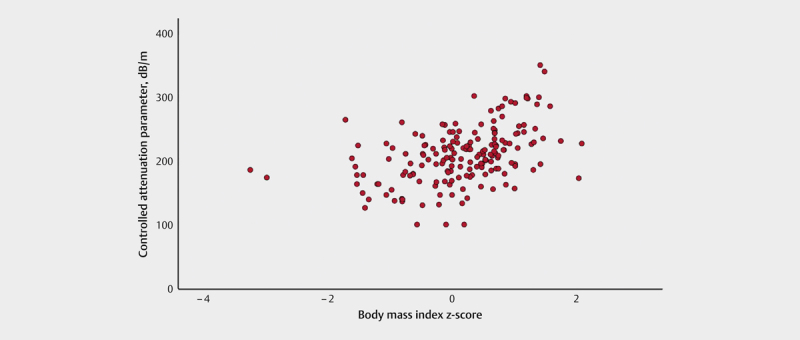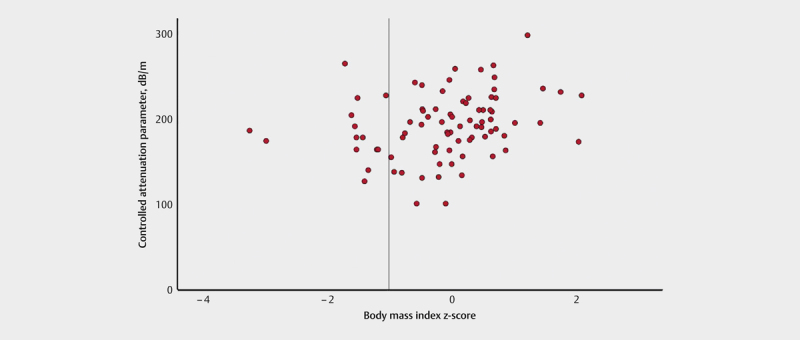Controlled Attenuation Parameter in Healthy Individuals Aged 8-70 Years.
IF 1.6
Q3 RADIOLOGY, NUCLEAR MEDICINE & MEDICAL IMAGING
引用次数: 1
Abstract
Abstract Purpose Controlled attenuation parameter (CAP) is a non-invasive method to assess the presence of liver steatosis. It has been evaluated in children and adults, mainly in either the obese or in subjects with suspected liver disease. Our aim was to describe CAP in healthy non-obese subjects without suspected liver steatosis and to suggest cutoff levels for steatosis. Materials and Methods We prospectively recruited 187 individuals aged 8–70 years. All underwent clinical examination, including height and weight measurement. Body mass index (BMI) was calculated and converted into z-scores. To exclude liver pathology, B-mode ultrasound and liver stiffness measurements were performed in all prior to CAP measurement. Blood was drawn for liver biochemistry in adults. Results CAP was associated with BMI z-score across all ages. CAP started to rise alongside BMI z-score already in subjects with a BMI below average. CAP values were higher in adults than in children (p<0.001), and higher in adult males than adult females (p=0.014). CAP did not correlate with age within the adult or pediatric cohorts. CAP was highly correlated with the fatty liver index. 18 and 23% of subjects showed CAP above the suggested cutoff value for children and adults, respectively. Conclusion CAP was correlated with BMI z-score, even in individuals with a below-average BMI . We found CAP above published cutoff values in a substantial proportion of presumably healthy, non-obese children and adults, warranting further research to clarify whether this represents non-obese non-alcoholic fatty liver disease or if reference values need adjustment.



8-70岁健康人群的控制衰减参数
本文章由计算机程序翻译,如有差异,请以英文原文为准。
求助全文
约1分钟内获得全文
求助全文
来源期刊

Ultrasound International Open
RADIOLOGY, NUCLEAR MEDICINE & MEDICAL IMAGING-
CiteScore
3.00
自引率
0.00%
发文量
7
审稿时长
12 weeks
 求助内容:
求助内容: 应助结果提醒方式:
应助结果提醒方式:


